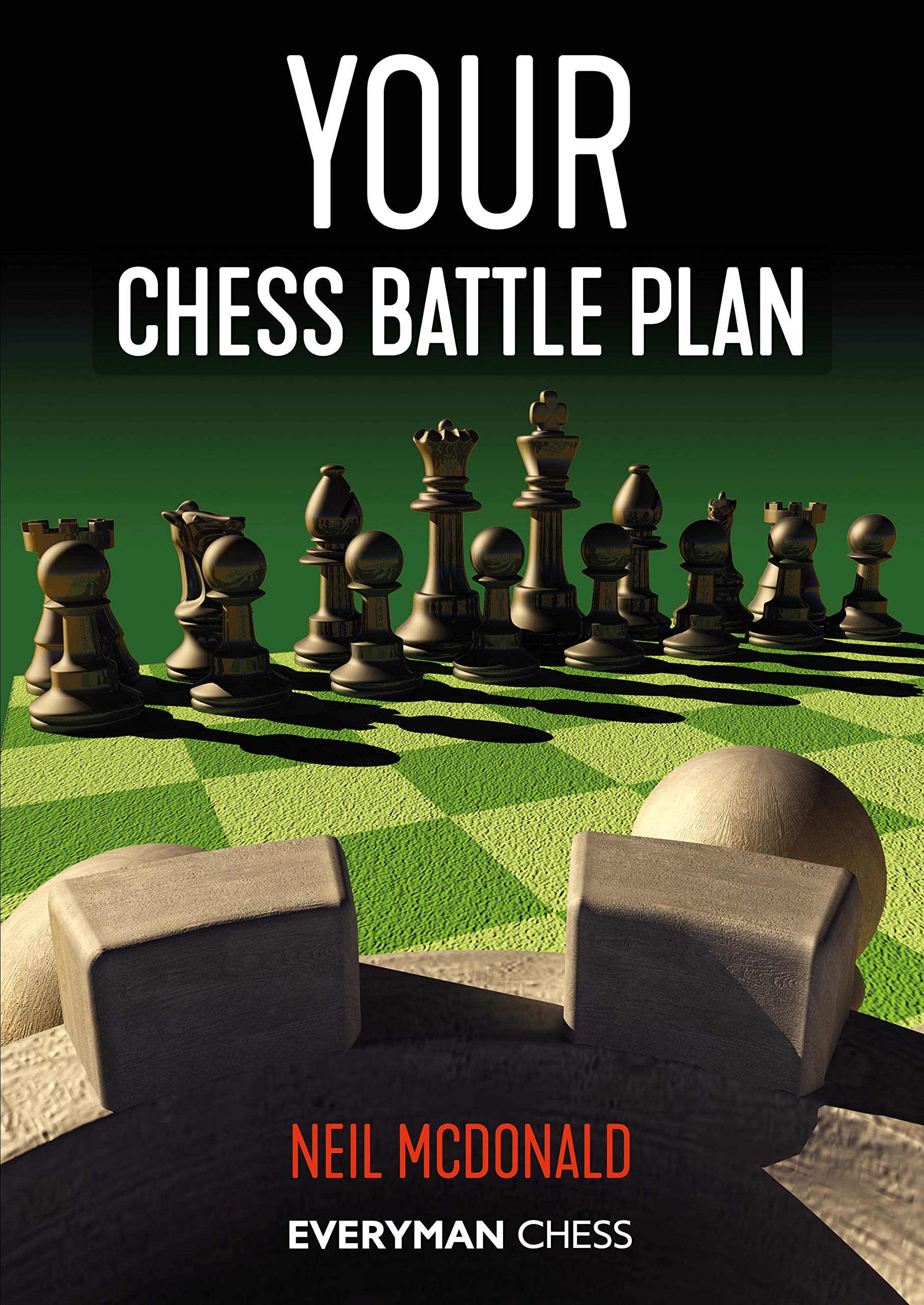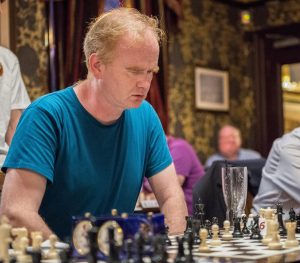
Neil McDonald is an English GM, an active player, a FIDE Trainer and a coach to the England junior teams. Neil has authored thirty-seven books for The Chess Press, Batsford and, most recently, Everyman Chess. One of his most recent works, The King’s Indian Attack : Move by Move, impressed considerably.
In 2019 we reviewed “Coach Yourself”

From the book’s rear cover we have :
“One of the most challenging tasks in a chess game is to find the correct strategy. It is far easy to attack too randomly, to miss a vital opportunity, or even choose the wrong plan altogether. These are all mistakes frequently seen by even quite strong players.
Your Chess Battle Plan focuses on how Magnus Carlsen and other great masters decide on the best strategy in a position and then find the right ways to implement it. Clear advice shows you how to hone in on the most relevant features of a position in order to decide what your general plan needs to be. Factors that are addressed include when to exchange pieces, when to make long-range manoeuvres, when to offer sacrifices and how to identify and focus on key squares. Your Chess Battle Plan will get you thinking along the right strategic lines and using your pieces and pawns in a much more efficient and skilful manner.
- A complete self-improvement programme.
- Advice to evaluate the current level of planning in your own games.
- Utilizes a structured approach, making the most of your study time.”
- Improving the Activity of your Pieces
- Stopping the Opponent Playing Good Moves
- Full Grovel Mode
- Punishing Faulty Freeing Moves
- Exploiting a Hole
- Manoeuvring Against Pawns
- Promoting a Pawn
- Using a Pawn as a Battering Ram
- Sacrificing to Gain the Initiative
- Deciding the Character of the Game in the Opening
- Paperback : 318 pages
- Publisher: Everyman Chess (15 Feb. 2020)
- Language: English
- ISBN-10: 1781945284
- ISBN-13: 978-1781945285
- Product Dimensions: 17.8 x 22.9 cm
The content is divided into ten chapters as follows :
For each of these themes the author selects a dozen or so games between high quality opponents. He fast forwards to the key moment, sets the scene and then analyses the play from this moment onwards.
To get a flavour for yourself here is an excerpt from the books’s Kindle version.
Each of the game fragments is analysed with a friendly and candid style emphasizing the key elements not only in the position but, more importantly, in the tactics and strategy implied by the chosen plan. To get most benefit from the authors text it would be best to set-up the start position of the fragment on the board and cover the following text. Spend some time getting “into the zone” of the position and try and decide the best plan for yourself. Having done that then reveal the authors notes and see how much you have predicted. Do this time and time again in a give chapter / theme then the ideas should start occurring to yourself with less prompting.
For a little context here is the full game (up to White 46th) that is discussed below :
From the Promoting a Pawn chapter there is the game (49) Demchenko – Gukesh, 2019 that reached this position after white’s 46th move :
and this is the instructional text from the author :
“Question : Can you see killer blow White had missed?
it looks as if Black is going to have to resign in view of the unstoppable mate, but :
Answer : 46…Qxf5+!
A horrible surprise for White. If he takes the queen it is mate on h1.
47 Kh2 Qc2+ 0-1
It will be mate on g2.
It feels as white was somewhat unlucky in that the logical course of his plan required him to find the ‘only’ move 45.Rf3!, without which he was lost. When the opponent queens first, the stakes on he accuracy of your moves become very high. Meanwhile, Black had to find the tricky 44…Qb7+! and hope that White would overlook the deadly idea behind it. Gukesh was a 12-year old Grandmaster at the time of this game, and not likely to miss such a tactical chance!”
In total 76 games are examined either in full or partly. This book provides a rich pot pourri of well selected examples that demonstrate the ideas of the chapter / theme.
We think this that book will get the student thinking about his or her own potential plans for a position hopefully adding dimensions that would not normally have been considered. The rewards from studying this book are likely to be much greater confidence in middle game positions and perhaps even less fear of murky or unclear positions. Many previous middle game books examine superb examples of play from Capablanca and others where perhaps the positions are less “messy” and not as “lifelike”. These 76 examples from the author are very down to earth and will benefit the student from study.
A couple of small gripes with the production are : the diagrams do not have a “to move” indicator. Secondly, some Everyman books (but not this one) have an extra folding part to the front and rear covers. These we find protect the book from damage and also can be used as an emergency book mark !
In conclusion we like this book a great deal and hope to find the time to study all of it in depth : highly recommended !
John Upham, Cove, Hampshire, 21st February, 2020

Book Details :
Official web site of Everyman Chess

